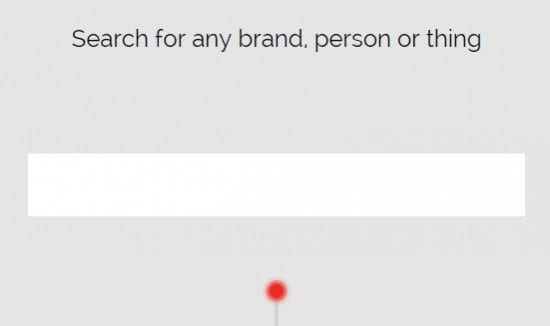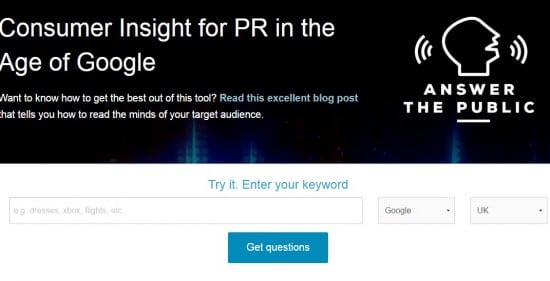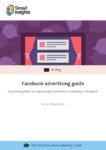Examples of how to start getting results from Facebook
This post is an introductory guide to setting up your business on Facebook if you don't already have a company page or it has been neglected! If you are looking for more advanced content to optimise your use of Facebook, check out our other posts on Facebook marketing and related guides.
Setting up a Facebook business page takes less than 30 minutes and is super-simple (if you’re yet to get started, we’ve included a handy “how-to” infographic below that will take you through what to do) however Facebook marketing isn’t all plain sailing - the tricky part is in understanding what to do to utilise the network to its full potential.
Let’s take a look at a few insider tips that will get you on the right road to mastering the art of Facebook marketing and give you an introduction to Facebook for business …
How much to post:
There’s no set rule here but… it’s important to post consistently. Unless you pay to increase exposure of your posts (more on this shortly) only a very small percentage of your ‘fans’ are likely to see what you say. The organic reach of posts from Facebook pages has been slowly declining, from an average of 16% back in 2012, to around 2.6% in March of this year. This means that if you want to have any real chance of being seen, you need to be posting regularly.
That said, while quantity is important, quality is still (and always will be) the trump card.
Facebook uses a sophisticated algorithm to decide how prominently in user’s newsfeeds particular posts will appear. Simply being a brand page gets you off to a bad start, but, the more people that interact with your post, the more of your audience will see it.
In summary: post consistently, but don’t post crap.
When to post:
Research from bitly has shown that content posted between 1pm and 4pm resulted in the highest levels of engagement, while content posted between 8pm and 8am got the least engagement.
However, every brand and their audience are different. The only way to be absolutely certain of the best time for you is to test it yourself.
How to post:
According to Buffer, the perfect Facebook post is:
- A link
- Brief (40 characters or less)
- Timely and newsworthy
Buffer gave an excellent example from The Muse. This is the sort of thing you should be trying to emulate:

Of course, not any post pulled in from a link will do - note the large image (that’s been designed specifically for use in that post), the repetition of the heading, and the additional comment that emphasizes why someone should click the link:

How to post a link…
It’s not immediately obvious how to post a link to Facebook since nowhere is the word ‘link’ actually used, however it’s very simple once you know what you’re doing. The setting for posting a link is actually called ‘Status’.

This should be the default setting so all you (should) need to do is post the link that you want to share into the composer box.
Facebook will then pull in the link’s meta data; specifically its title, description, and a photo.
You can then edit any (or all) of this data. Just click on the information you want to change and either write your own custom text or replace the image.

Quick tip: if you don’t do anything with the link you inputted into the composer box, it will remain in the post and look something like this:

So make sure to either remove the link text before you post, or, best of all, replace it with a (concise) custom comment like seen in The Muse example above.
What to Post:
Your Facebook posts should be:
- Relevant, and wherever possible
- Timely and original
Facebook’s algorithm favours timely stories, but only slightly, so don’t fret if you’re in an industry that doesn’t often lend itself to trending topics. You can still ‘win’ Facebook with content that’s timeless (and) interesting.
Likewise, the more original content you can post, the better. However there’s a lot of value to sharing other’s content too, especially if you make sure to credit them, and try to add to the conversation, rather than just parroting their points.
Creating original, sharable content can be expensive (many larger brands will have whole teams dedicated to doing just that) so don’t put yourself down if you don’t have the time or budget to mimic the social habits of brands like Innocent or Cadbury.
But, look hard and you’ll see that even these brands share unoriginal content from time-to-time…

So all is not lost if you are forced to follow suit.
The sort of content you post should be determined by your brand and your audience. It needs to reflect your brand’s voice and beliefs, while also being of interest to your target audience. It doesn’t need to relate directly to your product, as long as it reflects your brand ethos.
Red Bull are a brilliant example of this – their product is an energy drink, but through branding, marketing, and sponsorships, Red Bull has become synonymous with high-energy, extreme sports. Consequently, the bulk of what they post to Facebook is not product plugs, but videos of extreme sports in action:

Lurpak make…. Butter. There’s nothing glamorous about butter. But when it’s used in cooking? It’s delicious. Clearly Lurpak know this and let mouth-watering foodie photography dominate their Facebook page:

If you need to find out more about your audience, Google Analytics is a great place to begin. Click the ‘Audience’ tab to get started:

You can also use tools like YouGov Profiles – just enter a brand, person, or ‘thing’ to start exploring user profiles:

Or, enter a relevant keyword into Answer the Public to see what associated questions people are asking, and use your findings to inspire content ideas.

Boosting Visibility:
If you want to ensure your audience actually see the things you post, you will probably have to give in and pay Facebook for the exposure. Thankfully, the cost of doing this is very reasonable.
The easiest way to increase the visibility of your posts is to boost them. To get started, post an update to Facebook and click the ‘Boost Post’ button.
From here you can choose to show your post only to people who already like your page, people who like your page and their friends, or people you choose through targeting.
If you want to promote your post to people that like your page, or that same group plus their friends, you’ll be able to set a budget and the duration you want to boost the post for. If you haven’t used Facebook ads before, you’ll probably need to set up a payment method at this stage, too.

If you choose to promote your post by targeting a new audience, you will be given a number of targeting options including location, age, gender, and best of all, their interests.

Boosting Facebook posts doesn’t always guarantee a solid ROI, but if you choose to promote the right posts to the right people, you should be setting yourself up to see good results.
For more options, you can choose to use Facebook’s Ads Manager – one of the drawbacks of boosting posts is that while a large audience will see your post appear in their timeline, that doesn’t mean they’re visiting your Facebook page or your website. Unfortunately, even if they click the ‘like’ button on your posts, that doesn’t mean they’ve made any tangible contact with your brand.
However, with Ads Manager you can be far more targeted with the goals of your campaigns. It’s packed with features so I won’t bore you with details of them all here. Smart Insights has produced a highly detailed guide to advertising on Facebook which explains the features of Ads Manager and Power editor.
Download resource – Facebook Advertising Guide
A practical guide for Expert members explaining how to set up and optimize ads on Facebook.
Access the Facebook advertising guide
Reviewing Performance:
To get the most out of Facebook marketing you need to be monitoring the performance of your activities. Thankfully, while there’s heaps of tools that will help you drill into the success of your campaigns, Facebook makes analysis nice and easy with their ‘insights’ section.
To access this, visit the page you want to analyse – the ‘Insights’ button will be right at the top of the page.

From here you can take a look at useful information such as:
- How your page likes have grown
- The average reach of your posts
- The number of times people actually visited your page (rather than simply viewing a post from their timeline)
- Demographic information, and my favourite feature…
- …How well specific posts have performed
Play around with this data and use the information to influence future updates. For instance, take note of those posts that have performed particularly well (or, particularly badly), and create more content similar to that which did well, and avoid creating content along the lines of what did badly.
Optimising Your Page:
Optimisation isn’t just something we do to our website for the search engines, it’s also something we should be doing with our social profiles, including Facebook. Let’s take a look at how…
Make sure your Facebook URL matches your brand name
You (probably) wouldn’t choose a website URL that didn’t match your brand name, and you shouldn’t treat Facebook any differently. If the URL isn’t the same as your brand name it makes life confusing for your audience and makes it harder for people to find you.
If possible, you should also include your number one keyword in your Facebook URL. Google use this URL to help determine results for “keyword”+Facebook search queries.
You can find out how to change the URL here (bear in mind, you can only do this once).
Complete your profile properly
It seems obvious but some businesses fail miserably at this. Include as much information on your Facebook page as possible. This may include (but isn’t limited to):
- Your website address
- Location
- Opening times
- Phone number
- Email address
- Description of what you offer
- Images
Basically, the more information you can offer visitors via your Facebook page, the better. Bear in mind that in this day and age, some people may never visit your website, and will expect to see all necessary information on Facebook.
Use keywords in your About section
Research from Marketing. AI found that the “About” section of pages plays an important role in search queries, so optimise it in a similar way that you would optimise the “About” section of your website.
Focus on growth and engagement
In addition to keywords in URLs and your ‘about’ section, the visibility your brand page will enjoy is also determined by the popularity of your page. Or in other words, how many people have ‘liked’ your page, and how engaged they are with it.
Consequently, if you want to gain organic momentum for your Facebook page, you need to be putting the time (and money) into growing your pool of followers and keeping them engaged.
Last but not least: if this is all going over your head because you’re still waiting to get started with Facebook for business, take a look at this handy step-by-step guide from SmB that will talk you through how to set up your Facebook in just 15 minutes…


Thanks to
Amy Fowler for sharing their advice and opinions in this post. Amy Fowler is… a digital marketer who works alongside a number of UK companies including
SmB to assist with SEO, social media marketing and content creation. You can follow her on
Twitter or connect on
LinkedIn.



















 Thanks to
Thanks to 


